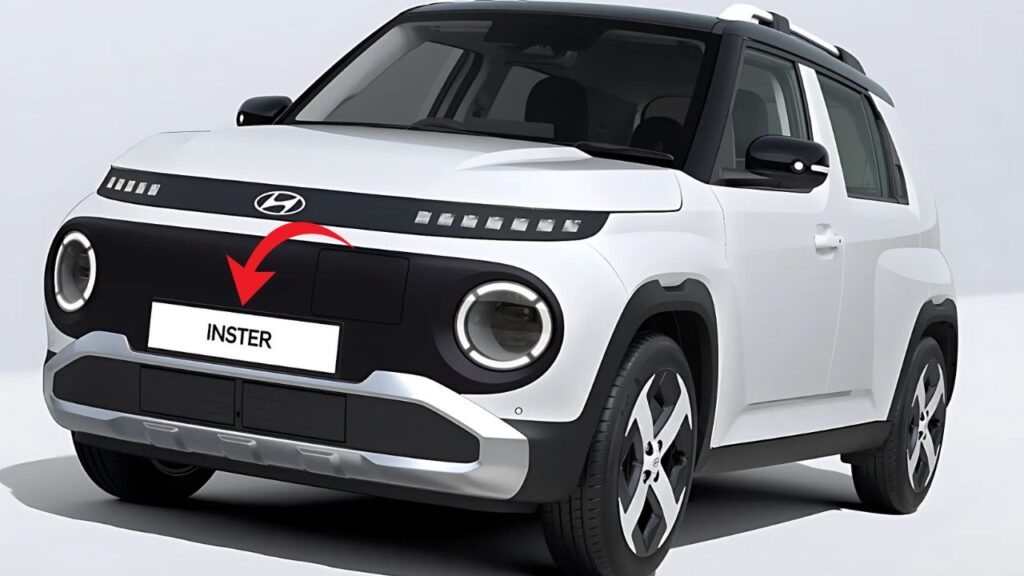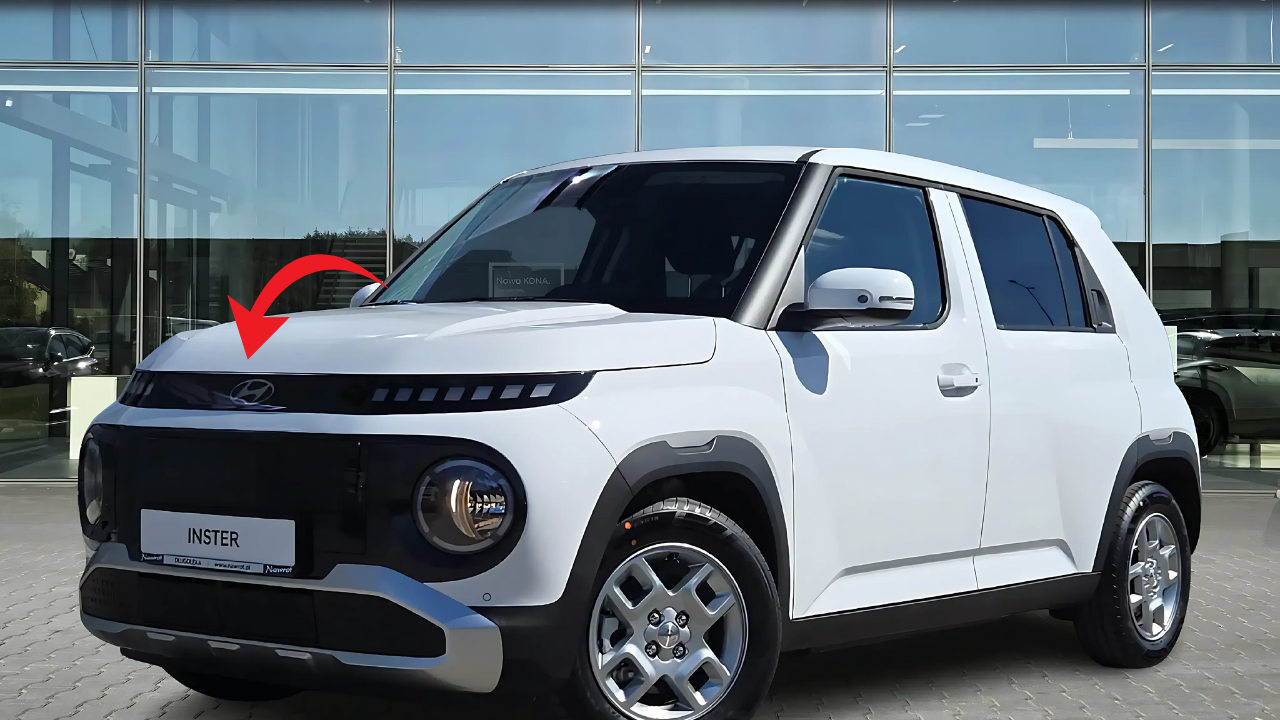The affordable electric vehicle segment in Australia is heating up with serious competition. Hyundai’s 2025 Inster enters this crowded market with ambitious plans to challenge the popular MG4’s dominance.
Both vehicles target budget-conscious consumers seeking electric mobility without premium pricing. However, their approaches to achieving this goal differ significantly in execution and philosophy.

Design and Build Quality Comparison
The visual differences between these vehicles reflect their manufacturers’ distinct design philosophies and market approaches. While both prioritize practicality, their aesthetic interpretations vary considerably.
Build quality represents one area where traditional manufacturers often maintain advantages over newer market entrants. Material selection and assembly processes can significantly impact long-term ownership satisfaction.
Exterior Design Philosophy
The Hyundai Inster embraces clean, minimalist styling that avoids controversial design elements. Its conservative approach appeals to buyers seeking timeless aesthetics over trend-driven styling.
MG4 styling incorporates more aggressive design cues and contemporary elements. The approach targets younger buyers who prefer distinctive appearance over conservative elegance.
Interior Space and Comfort
Space utilization showcases each manufacturer’s engineering priorities and constraints. Both vehicles maximize interior room within their respective size limitations.
The Inster’s cabin design emphasizes practicality and durability over visual drama. Material choices prioritize longevity and easy maintenance rather than initial visual impact.
MG4 interiors feature more contemporary styling elements and technology integration. However, long-term durability questions remain unanswered due to the brand’s relatively recent market entry.
Performance and Driving Dynamics
Electric powertrains in both vehicles provide adequate performance for typical driving scenarios. Neither vehicle prioritizes sporting performance over efficiency and affordability.
Real-world driving experiences reveal differences in refinement and overall polish. These distinctions become more apparent during extended ownership periods rather than brief test drives.
Powertrain Specifications
The Inster’s electric motor delivers smooth, linear power delivery that suits urban and suburban driving. Performance feels adequate rather than exciting, matching the vehicle’s practical positioning.
MG4 powertrain options include variants with higher performance capabilities. However, these upgrades come with corresponding price increases that reduce the value proposition.
Ride Quality and Handling
Suspension tuning reflects each manufacturer’s understanding of local road conditions and consumer preferences. Australian testing reveals meaningful differences in comfort and control.
The Inster prioritizes ride comfort and noise isolation over dynamic handling characteristics. This approach suits family-oriented buyers who value comfort above sporting pretensions.
MG4 suspension setup attempts to balance comfort with more engaging handling. The result feels competent though less refined than established manufacturers’ offerings.
Technology and Features Comparison
Feature availability and implementation quality distinguish these otherwise similar vehicles significantly. Both manufacturers face the challenge of providing modern technology within strict cost constraints.
User interface design and system reliability often separate budget vehicles from their premium counterparts. These differences become apparent during daily use rather than initial demonstrations.
Infotainment and Connectivity
The Inster’s infotainment system prioritizes simplicity and reliability over cutting-edge features. Physical controls remain available for essential functions, reducing distraction while driving.
Integration with smartphones works seamlessly through established protocols. The system avoids experimental features that might compromise reliability or increase complexity unnecessarily.
MG4 technology features often appear more advanced on paper but may lack the polish of established manufacturers. Software updates and long-term support represent potential concerns for budget-conscious buyers.
Safety Systems
Both vehicles include comprehensive active safety features as standard equipment. However, implementation quality and reliability can vary significantly between manufacturers.
The Inster benefits from Hyundai’s extensive experience with safety system integration. These systems typically work more reliably and less intrusively than newer manufacturers’ implementations.
MG4 safety features meet regulatory requirements but may lack the refinement of more established systems. Calibration and sensitivity settings sometimes require adjustment for optimal performance.
Charging and Range Capabilities
Range anxiety remains a primary concern for potential electric vehicle buyers, making charging capabilities crucial to market success. Both vehicles address these concerns through different approaches.
Real-world range figures often differ from official estimates, making independent testing essential for accurate comparisons. Australian conditions can significantly impact actual performance versus claims.
Battery Technology and Capacity
The Inster utilizes proven battery technology that prioritizes longevity and reliability over maximum energy density. This conservative approach reduces warranty risks and replacement costs.
Temperature management systems protect battery life in Australian climate conditions. Hot summers can significantly impact battery performance and longevity without proper thermal management.
MG4 battery systems offer competitive capacity figures but less proven long-term reliability. Warranty coverage and replacement costs represent important considerations for budget-conscious buyers.
Charging Speed and Infrastructure
Both vehicles support standard charging protocols used across Australian public charging networks. Compatibility ensures access to the growing infrastructure without proprietary limitations.
Home charging capabilities suit typical commuting patterns for most Australian drivers. Overnight charging provides sufficient range for daily use without requiring workplace or public charging.
Fast-charging capabilities enable longer journeys with strategic planning. The Inster’s charging curve remains relatively stable, providing predictable charging times for trip planning.
Pricing Strategy and Value Proposition
Aggressive pricing strategies from both manufacturers aim to accelerate electric vehicle adoption among price-sensitive consumers. Government incentives further improve the value equations.
Total cost of ownership calculations must include maintenance, insurance, and depreciation factors. These elements can significantly impact the long-term financial benefits of electric vehicle ownership.
Purchase Price Comparison
The Inster’s pricing strategy emphasizes value through proven reliability and comprehensive warranty coverage. Higher initial costs may be offset by lower long-term ownership expenses.
MG4 pricing appears more aggressive initially but may not account for all ownership costs. Service availability and parts pricing can impact total ownership expenses significantly.
Government incentives vary by state and change frequently, affecting the net purchase price calculations. Both vehicles qualify for most available programs.
Operating Cost Analysis
Electricity costs remain significantly lower than petrol for equivalent travel distances. However, charging behavior and tariff selection can influence actual savings substantially.
Maintenance requirements for both vehicles remain minimal compared to traditional vehicles. However, service network availability and pricing can vary considerably between brands.
Insurance costs may differ between the vehicles due to factors including parts availability, repair complexity, and theft statistics. These differences affect total ownership costs meaningfully.
Service Network and Support
Dealer network coverage and service quality significantly impact long-term ownership satisfaction. These factors become particularly important for buyers in regional areas.
Parts availability and pricing affect both routine maintenance and accident repairs. Established manufacturers typically maintain advantages in these areas over newer market entrants.
Dealer Network Coverage
Hyundai’s extensive Australian dealer network provides confidence for Inster buyers nationwide. Service availability matches established automotive industry standards.
Regional coverage ensures support outside major metropolitan areas. This factor proves crucial for buyers planning to keep vehicles for extended periods.
MG’s newer dealer network continues expanding but may not match established manufacturers’ coverage. Service availability in regional areas could prove challenging for some buyers.
Warranty and Support Programs
The Inster benefits from Hyundai’s comprehensive warranty coverage and established support programs. These provide peace of mind for budget-conscious buyers concerned about unexpected expenses.
Roadside assistance and customer support programs reflect manufacturer commitment to customer satisfaction. Established manufacturers typically provide more comprehensive support services.
MG warranty coverage appears competitive but lacks the proven track record of established manufacturers. Customer service quality and responsiveness remain unproven in the Australian market.
Market Reception and Consumer Response
Early market feedback provides insights into consumer preferences and priorities within the affordable electric vehicle segment. Both vehicles address different buyer motivations and concerns.
Professional reviews and owner experiences often reveal differences not apparent during brief test drives. Long-term ownership patterns provide more meaningful evaluation criteria.
Target Market Analysis
The Inster appeals to conservative buyers seeking proven reliability and established manufacturer support. These consumers prioritize long-term satisfaction over initial cost savings.
Family buyers particularly appreciate the Inster’s focus on safety, reliability, and practical features. These priorities often outweigh minor price differences for this demographic.
MG4 attracts buyers prioritizing initial purchase price and contemporary features. Younger buyers and early adopters show stronger interest in the MG4’s positioning.
Expert Reviews and Comparisons
Automotive journalists consistently praise the Inster’s refinement and build quality advantages. These factors contribute to stronger long-term ownership satisfaction ratings.
Initial impressions often favor the MG4’s aggressive pricing and feature list. However, extended testing reveals refinement and quality differences that impact daily usability.
Consumer satisfaction surveys typically show advantages for established manufacturers in reliability and service satisfaction. These factors prove increasingly important during extended ownership periods.
Environmental Impact and Sustainability
Both manufacturers emphasize environmental benefits of electric vehicle adoption. However, their approaches to sustainable manufacturing and lifecycle management differ significantly.
Battery recycling and end-of-life vehicle management represent growing concerns for environmentally conscious consumers. Manufacturer commitments to these issues influence purchase decisions.
Manufacturing Sustainability
Hyundai’s established sustainability programs address manufacturing emissions and waste reduction. These commitments extend beyond marketing claims to measurable environmental improvements.
Supply chain transparency allows consumers to evaluate environmental impact beyond vehicle operation. Responsible sourcing becomes increasingly important for conscious consumers.
MG’s sustainability commitments remain less established due to the brand’s recent market entry. Long-term environmental policies require time to demonstrate effectiveness.
Lifecycle Environmental Impact
The Inster’s focus on longevity and reliability extends environmental benefits through reduced replacement frequency. Durable vehicles provide better environmental outcomes over their operational lives.
Manufacturing quality affects environmental impact through warranty claims and premature replacement requirements. Higher initial quality standards reduce total environmental impact.
Battery longevity represents a crucial factor in total environmental impact calculations. Proven battery management systems provide more predictable environmental benefits.
Future Prospects and Market Evolution

The affordable electric vehicle segment continues evolving rapidly with new entrants and technological improvements. Both vehicles represent current snapshots of this dynamic market.
manufacturer’s commitment to market segments influences long-term product development and support. Established manufacturers typically maintain a stronger commitment through market fluctuations.
Technology Development Roadmap
Hyundai‘s integrated electric vehicle strategy ensures continued development and improvement for the Inster platform. This commitment provides confidence for long-term ownership.
Software updates and feature enhancements extend vehicle capabilities throughout ownership periods. Established manufacturers typically provide more comprehensive update programs.
MG’s rapid market expansion may strain development resources across multiple vehicle programs. Focus and resource allocation could impact individual model development.
Market Position Evolution
The Inster’s conservative positioning provides stability as market conditions change. Proven approaches often weather market fluctuations better than aggressive strategies.
Competition continues intensifying in the affordable electric vehicle segment. Both vehicles face challenges from new entrants with different value propositions.
Consumer preferences continue evolving as electric vehicle adoption increases. Early adopter preferences may differ from mainstream market requirements.
The battle between the 2025 Hyundai Inster and MG4 represents broader competition in the affordable electric vehicle market. Each vehicle addresses different consumer priorities and concerns.
Long-term success depends on factors extending beyond initial specifications and pricing. Service quality, reliability, and manufacturer support prove crucial during extended ownership periods.
FAQs
Which vehicle offers better value for money between the Inster and MG4?
The Inster provides better long-term value through proven reliability and comprehensive support, while MG4 offers lower upfront costs but uncertain long-term expenses.
How do charging capabilities compare between these two vehicles?
Both vehicles support similar charging speeds and infrastructure compatibility, with the Inster offering slightly more predictable charging performance curves.
Which vehicle is more suitable for Australian driving conditions?
The Inster’s focus on thermal management and proven durability makes it better suited for Australia’s harsh climate conditions and varied terrain.

